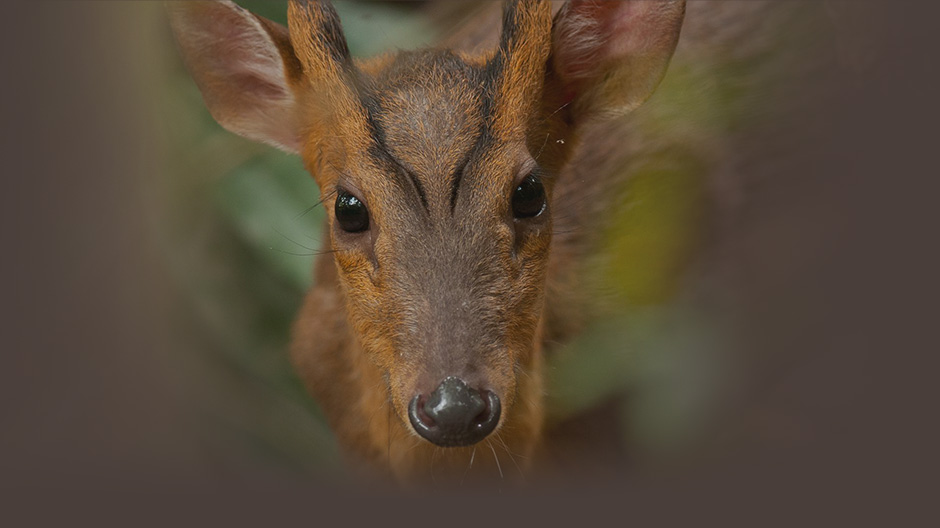全世界最稀少的猿類──克羅斯河大猩猩(Cross River gorillas),現在有新的保護區了!非洲喀麥隆首相Philemon Yang 17日簽署條約,正式在喀麥隆西南省東北部山區設立Tofala Hill野生動物保護區。
獸肉交易 棲地破碎 生存危機不只是伊波拉病毒
這個保護區表面積超過8,000公頃,約31平方英哩。這裡的雨林是全球重要生態熱點。除了極度瀕危的克羅斯河大猩猩,新保護區也是其他瀕危野生動物的棲息地,包括非洲最瀕危的黑猩猩以及大象。
雖然所有的西部大猩猩都被列為極度瀕危(西部低地大猩猩極度瀕危的部分原因是伊波拉病毒),克羅斯河大猩猩是當中存續狀況最危急的非洲猿類。世界自然保育聯盟靈長類專家小組指出,克羅斯河大猩猩是全世界最瀕危的25種靈長類之一。
克羅斯河大猩猩是最具西部和北部特徵的大猩猩。其長相、攝食習慣、使用工具和其他低地大猩猩皆不盡相同,也更具有地域性。
巨猿和其他野生物種皆面臨狩獵、獸肉交易和人為棲地流失的危機。農業擴張和開發棕櫚油園導致棲地破碎,是森林大猩猩的最大威脅。其他間接原因還包括地方的貧窮和缺乏執法系統。
串起生態廊道 保護區還需有效管理
投入克羅斯河大猩猩保育多年的非洲保育基金會指出,儘管田野工作者執行的保育行動有所成效,唯有增加當地反盜獵人員,並由政府有效的管理保護區,才能從根本減少威脅。
非洲保育協會從2004年起和環境及農村發展基金會合作,從事Tofala-Mone森林保育活動。主要貢獻包括在Tofala-Mone森林廊道發現新的克羅斯河大猩猩族群、推展巨猿監控計畫、建立社區管理架構,以及成功的地方教育和社群生計計畫。
「破碎的大猩猩和黑猩猩族群之間若沒有適當的生態廊道,很容易近親繁殖而產生疾病,快速導致地方性滅絕。」環境及農村發展基金會主席Louis Nkembi說。
廊道計畫的目的在於促進不同巨猿族群間的基因交流,並預期讓社群參與管理保育單位的工作。
Cross River gorillas, the world’s rarest apes, have a newly protected area that will better enable these unique primates to survive as a species.
Prime Minister of Cameroon Philemon Yang Friday signed a Decree to officially create the Tofala Hill Wildlife Sanctuary in South West Cameroon.
Located in the mountainous northeastern part of South West Province. The new sanctuary has a surface area of over 8,000 hectares, nearly 31 square miles. The rainforest in this area is considered a global biodiversity hotspot.
Besides the Critically Endangered Cross River gorilla, this land is inhabited by the most endangered African chimpanzee, the Drill and other endangered wildlife, such as elephants.
While all western gorillas are classified as Critically Endangered – in the case of the Western Lowland Gorilla due in part to Ebola virus – the Cross River gorilla is the most endangered of the African apes. It is one of the world’s 25 most endangered primates according to the International Union for the Conservation of Nature’s Primate Specialist Group.
Great apes and other wildlife species are under pressure from hunting and the bushmeat trade, as well as habitat loss due to human encroachment.
Habitat fragmentation due to the expansion of agriculture and palm oil plantations is one of the biggest threats to great ape conservation in the forest.
Indirect pressures include local poverty and the absence of a regulated law enforcement system.
Although great ape conservation activities by fieldworkers proved to be effective, conservation threats will only be sustainably reduced when the number of local anti-poaching staff is increased and the conservation areas become effectively gazetted by the government, says the African Conservation Foundation, which has worked and advocated on behalf of the Cross River gorilla for years.
Since 2004, the African Conservation Foundation has been working in a partnership with the Environment and Rural Development Foundation in the Tofala-Mone Forest Landscape.
Major successes include the discovery of new Cross River gorilla populations in the Tofala-Mone Forest Corridor, the launch of a great apes monitoring program, the creation of community management structures and successful education and livelihood projects in the project area.
The Cross River gorilla is the most western and northern form of gorilla. Cross River gorillas differ from other lowland gorillas in their physical appearance, their diet and local tool use and their more terrestrial lifestyle.
“Fragmented gorilla and chimpanzee populations, if not linked through appropriate biological corridors, are prone to inbreeding and diseases,” says Louis Nkembi, president of the Environment and Rural Development Foundation.
“Genetic inbreeding may very rapidly lead to the local extinction of these globally important species,” Nkemi said.
The corridor project is intended to lead to a genetic linkage between the different great ape populations. It expected to increase community involvement in the management of the conservation units in the area.
※ 全文及圖片詳見:ENS
 網站捷徑
網站捷徑





